Introduction:
When it comes to mobile app development, there are plenty of options, among which react native and native mobile are popular platforms. Today, we often see online forums with debates and comparisons with topics like React Native vs Native and much more. If we look at the statistics, mobile apps will cross over $935 billion in revenue in 2024. Also, mobile downloads have rapidly increased from 2016 to 2023, with 257 billion downloads. The reasons? We often check our mobile first whenever we want to search, pay, or shop. Mobile devices have always been a go-to device for most people today as they are convenient and quick. Hence, this has caused a high rise in demand for the mobile development industry.
Let's have a look at some more stats for React Native and Native to understand mobile app development trends in depth.
- Studies estimate there will be 4.74 billion smartphone users by the end of 2024, increasing by 2.2% each year since 2013. Between 2013 and 2024, smartphone usage rose an average annual 6.2% rate.
- Android app usage statistics show that about 22.6% of people continue to use an app one day after installing, 6.5% seven days later, and only 2.6% after 30 days; for iOS apps, this figure increases slightly to 25%, but only 4.3% remain after 30 days.
React Native is the best choice for creating mobile applications using JavaScript that work across platforms quickly. Its development is quicker than native app development, which involves making separate versions for each platform, such as iOS and Android, using languages such as Swift or Java to ensure optimal performance and fit on each.
What is Native Apps?
In simple words, if we say Native apps help developers to develop the highly-intuitive apps that are compatible for all platforms, such as iOS or Android. Native apps are created with languages and tools that only work on those specific systems.
For example, Swift or Objective-C is used for iOS, while Java or Kotlin is used for Android. They are specifically designed for their respective systems, so it's beneficial for GPS, cameras, and notifications right away.
The graph below shows a survey of native apps and their wide range of compatibility on different platforms.
Key Features of Native:
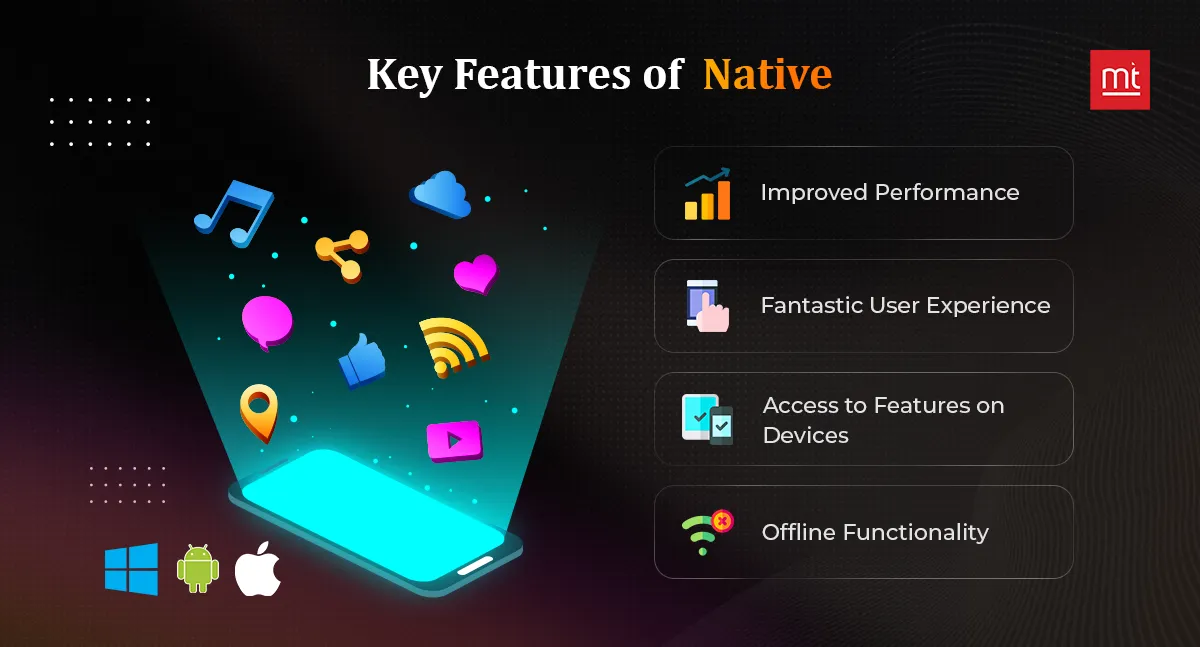
1. Improved Performance
Native apps are extremely fast since they're designed exclusively for a specific kind of device like an iPhone or Android phone. They utilize the hardware as well as software in the best method possible to ensure that all functions are smooth and fast.
2. Fantastic User Experience
The apps feel like you're using the device since they adhere to the guidelines and styles set by Apple or Google. The menus, buttons, and swipes work the way you'd expect them to, making it easy to operate.
3. Access to Features on Devices
Native apps can perform cool things like using your phone's camera or GPS or sending messages directly. They're designed specifically for your phone and can use its features for a better experience.
4. Offline Functionality
If you don't have an internet connection, native applications can be used to perform some tasks. There's a chance that you can play games, browse articles or utilize certain features without a Wi-Fi or internet connection. You can carry a part of the app everywhere you travel.
Advantages of Native Apps:
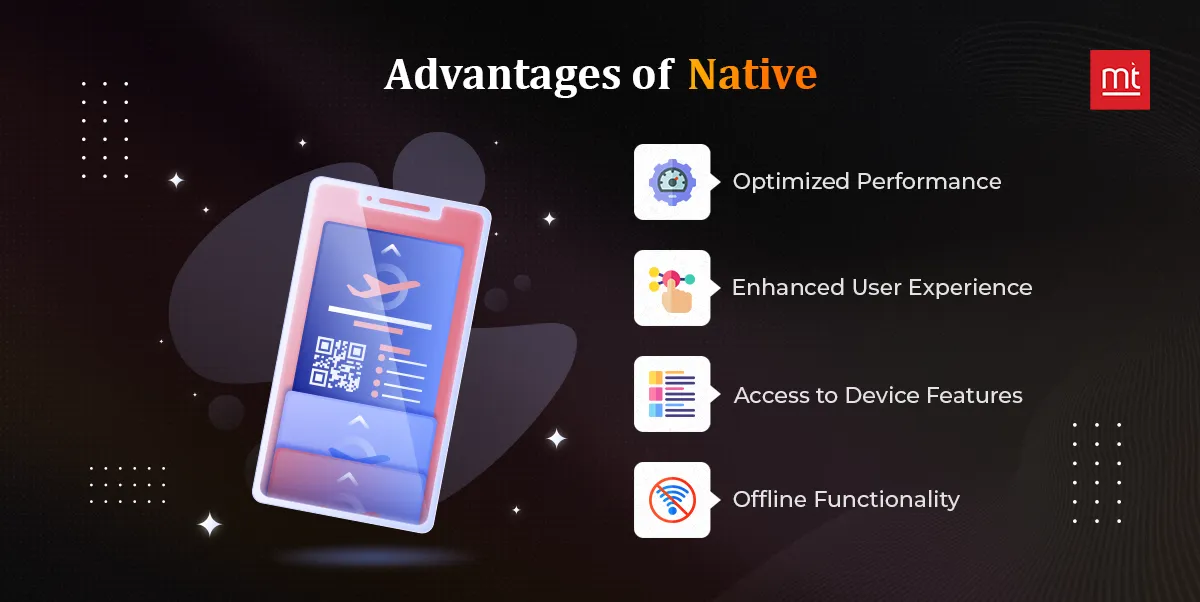
1. Optimized Performance
Native apps work like sports cars. They run quickly and smoothly since they're designed specifically to work on your smartphone. They utilize every power source of your phone, which means that they run smoothly and without glitches.
2. Enhanced User Experience
This app fits seamlessly into your smartphone since they adhere to all design and rules set forth by Apple or Google. So, menus and buttons are exactly what you'd imagine, which makes it simple and enjoyable.
3. Access to Device Features
Native apps utilize your phone's camera, GPS as well as other awesome functions. Because they're designed specifically for you and can take advantage of every power available for a wonderful experience.
4. Offline Functionality
Even when you're not connected, certain parts of native applications still function. There's a chance that you can engage in games, play with your phone, or access certain options without the need for Wi-Fi and data. You can carry an application wherever you move.
Limitations of Native Apps:
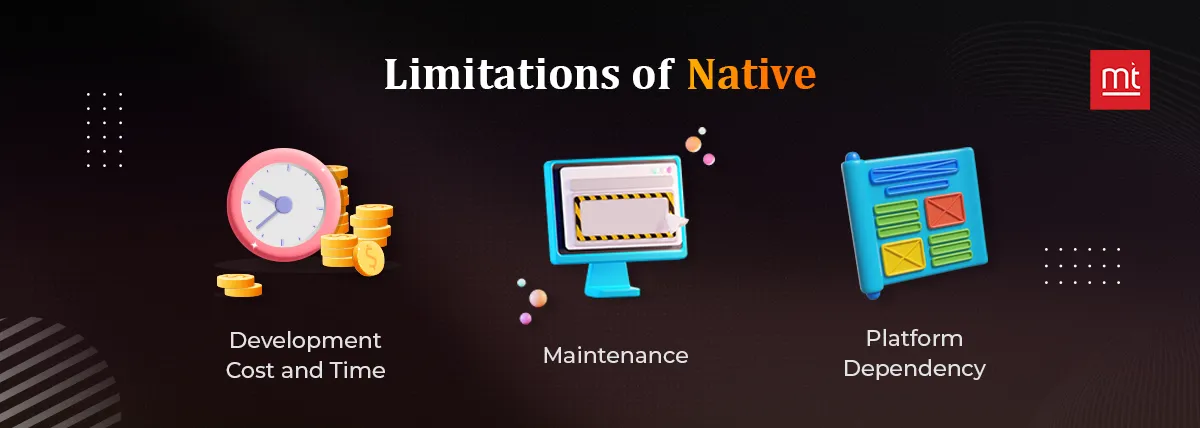
1. Development Cost and Time
Creating different versions of the app to work on different mobiles takes a lot of time and could cost a lot of dollars. Developers must also make sure that everything functions properly on every smartphone model, which isn't easy.
2. Maintenance
Due to the fact that there exist several versions of HTML0 that work on different devices, the developers are required to fix issues and update their apps constantly. This is like tending to a large garden. You must maintain the health of your garden and keep it growing.
3. Platform Dependency
If you're running an iPhone application, it only is compatible with iPhones. The same is true for Android apps, which only function on Android phones. This means that some users could lose out if they don't own the proper handset.
Which Popular Brands Are Using Native?
Did you know that the apps you use daily are also developed on native platforms? I'm surprised, right? Native apps are still a popular choice for top brands because they offer superior performance and the best user experience on specific platforms. Below, we have listed some of the apps that use native platforms for app development:
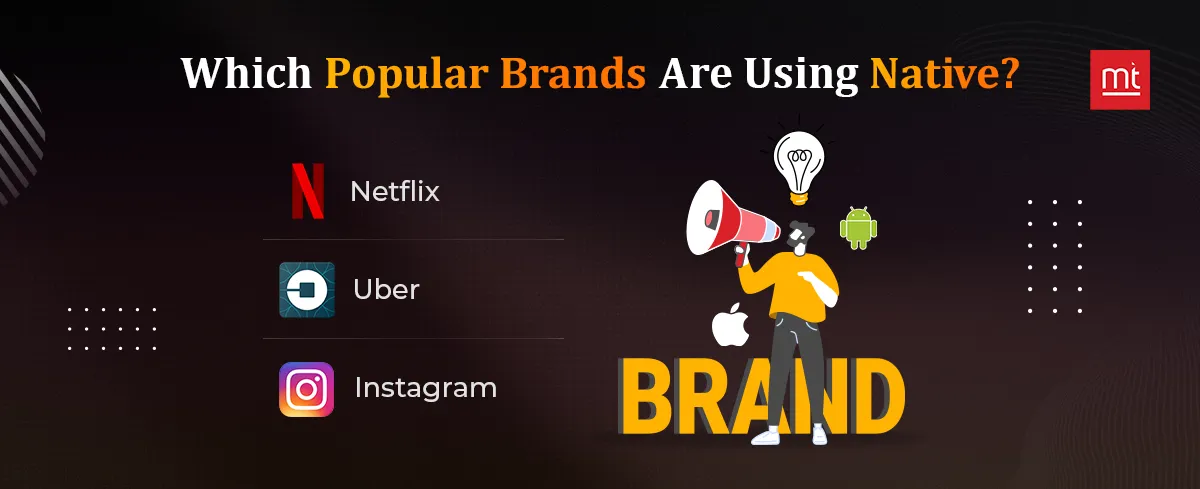
1. Instagram: Instagram is highly trending, and everyone has it on their phone. It is also built on a native platform to provide compatibility to iOS and Android users with an unmatched experience when sharing photos and videos.
2. Uber: Uber uses native apps for iOS and Android to provide its ride-hailing service. This ensures efficient performance as well as real-time tracking and monitoring of both drivers and passengers.
3. Netflix: Netflix is a native multi-platform app that lets subscribers stream movies and TV shows in HD quality. It also offers offline viewing.
What is React Native Apps?
React Native, also known as RN, is a popular mobile app framework that utilizes JavaScript. It allows you to create apps for iOS and Android that look and feel like they are designed for both platforms. With React Native, you can create a single set of code and apply it to different kinds of devices.
Key Features of React Native:
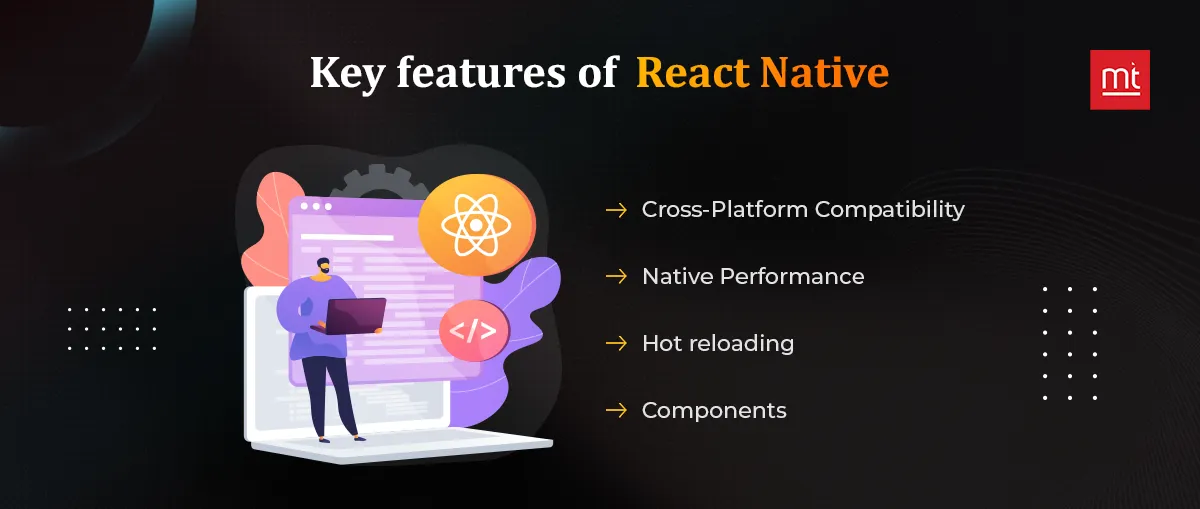
1. Cross-Platform Compatibility
React Native allows developers to use the same code on both iOS and Android. It saves time by not having to develop separate apps for different platforms.
2. Native Performance
Despite being built using JavaScript, React Native apps perform like native apps. They do this because native components are used, and these parts interact directly with the operating system of the device. Users get the same smooth, responsive, and fluid experience as they would with an app that is native.
3. Hot Reloading
Developers can instantly see the changes they make in their app, without having to compile. It speeds up development and allows quick iterations.
4. Components
Developers can create components that are reusable, like building blocks. The components are reusable in different parts of an app. This makes development easier and reduces redundancy.
Advantages of React Native:
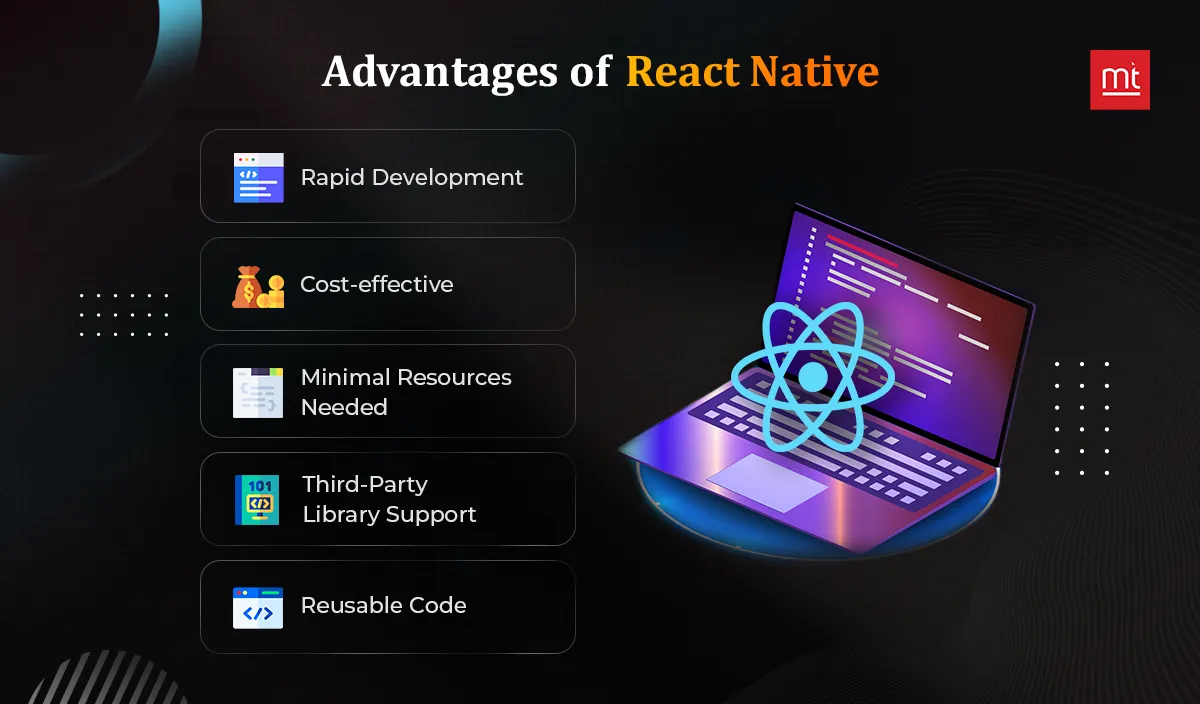
1. Rapid Development
React Native's hot reloading allows developers to view changes immediately without having to recompile the app.
2. Cost-effective
React Native allows code to be shared between platforms, reducing development time and costs. It is a great option for businesses and startups with limited budgets.
Limitations of React Native:

1. Native Features
Some native features may be unavailable to React Native, and some functionality will require additional integration of native code.
2. Performance Variability
Heavy computations and complex animations can cause performance problems compared with native applications.
3. Platform dependencies
React Native applications may contain platform-specific dependency that requires separate handling on iOS and Android.
4. Support and Community
Although React Native is a popular framework, it may take longer to find solutions for specific problems than more established frameworks.
Which Popular Brands Are Using React Native?
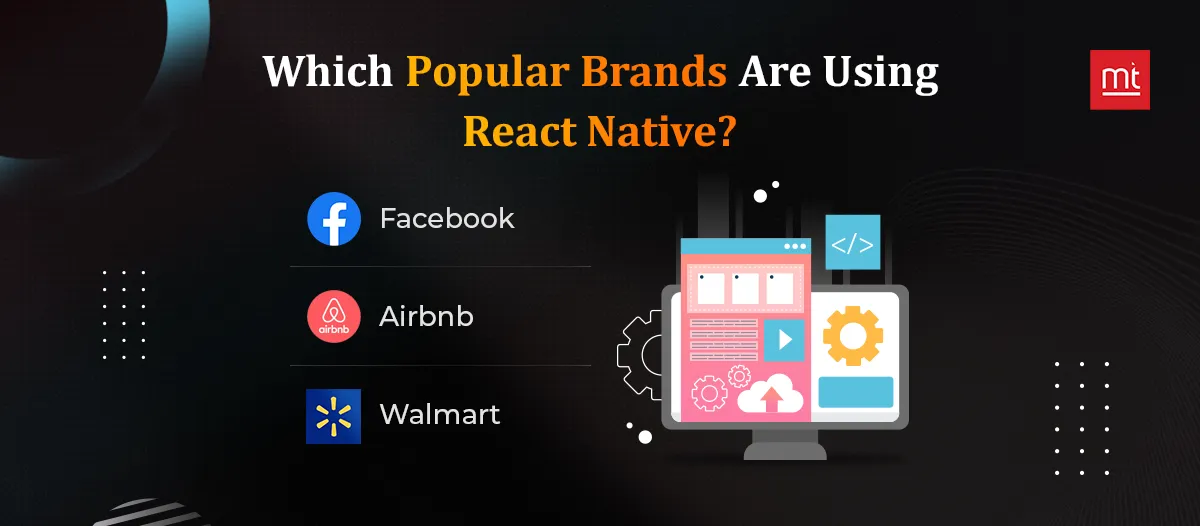
1. Facebook: Facebook social media giant makes use of React Native for its mobile application development, which includes the principal Facebook application and Instagram. This enables effective cross-platform development as well as seamless user experiences.
2. Airbnb: Airbnb makes use of React Native to build its mobile applications. This allows quick iterations and sharing of code among iOS as well as Android platforms. This allows consistency to be maintained and speeds up development.
3. Walmart : Walmart retailer uses React Native for its mobile application development, which allows the faster release of new features and updates on iOS as well as Android platforms. This lets Walmart keep its edge on the market for e-commerce.
4. UberEats: UberEats Food delivery service uses React Native for its mobile application development. It allows the business to offer a seamless and comfortable user experience across various mobile devices, while optimizing development resources.
Details Comparison Between React Native and Native
If you are a mobile app development company, comparing both platforms will help you to estimate the mobile app development cost for the project.
1. Language and Compatibility:
- The main difference between React Native and native is that react native uses JavaScript and allows code sharing between iOS and Android platforms.
- While native use platform-specific languages like Swift for iOS and Java for Android are used separately as platform-specific languages, leading to separate codebases.
2. Performance and Integration:
- React Native uses native components to develop functionality and provide native-like performance.
- Native apps offer optimal performance and seamless integration with device features. As for development speed and effort.
3. Development Speed and Effort:
- React Native provides faster development cycles and reduced development effort through features like hot reloading and code reuse.
- While native development takes more time and effort because of its platform-specific optimization and separate code.
4. Community Support and Learning Curve:
- React Native offers a large and vibrant community that offers extensive resources and assistance.
- While native development has smaller groups of community support, platform-specific resources are available for any kind of help.
5. Deployment Time:
- React Native generally offers quicker time to deploy since it permits the sharing of code between iOS and Android and Android, which reduces the need for two separate development tasks.
- Native development can be slower due to the requirement of creating distinct codebases for every platform.
6. Learning Curve:
- React Native offers a less difficult learning curve, particularly for people who have a good understanding of JavaScript because it relies on JavaScript to write code.
- Native development could require a higher learning curve because it is a requirement to learn platforms-specific programming languages such as Swift on iOS and Java to Android.
7. Popularity:
- React Native has gained popularity due to its cross-platform compatibility as well as its ease of use having a huge and active community offering support and assistance.
- Native development continues to be popular because of its speed and features that are platform-specific specifically in areas such as gaming and media.
8. Flexibility:
- React Native offers flexibility with the ability to work across platforms, which allows programmers to write code in one go and distribute it to different platforms.
- Native development offers flexibility for using specific features and optimizing that ensure the best performance and connection to hardware.
React Native vs Native: Comparison Table
Let's have a look at the Native vs React Native comparison table to explore this topic more.
Feature | React Native | Native development |
Language | Uses Javascript language | Uses platform-specific languages |
Performance and integrations | Native-like performance by using native components. | Need integration with device features |
Extensive libraries and features | Faster due to hot reloading and code reuse. | News separate codebases |
Helps and community support | Large and active community | Smaller community compared to React Native |
Learning curve | Easy to learn | Access to all native features and functionalities |
Usage | Used for chat, service apps, and more | Best for gaming or multimedia. |
Popularity | Mostly used for cross-platform app development | Mostly used for platform-specific development |
Making the Right Choice: What Works Best for Your Needs?
React Native offers cross-platform compatibility and faster development time, whereas native app development provides the best performance as well as features specific to the platform. In projects that need speedy deployment and low cost, React Native may be an ideal option.
But for applications that need maximal performance and a seamless interface native development is an alternative. In the near future, the field of mobile app development might be characterized by a steady increase in cross-platform frameworks such as React Native, driven by the necessity for efficiency and the advancement of technology. The best option is based on the particular specifications and the goals of each project.
When to Choose Native for Mobile App Development?
You can choose Native app development if you can't compromise on performance and need to deal with platform-specific features, such as gaming or multimedia apps that require complex functionalities or high-performance graphics. You can rely on native development because it provides optimal compatibility and user experience. Hence, you can ensure a good user experience, keeping your customers happy with the service and app.
When to Choose React Native for Mobile App Development?
Go for React Native if your project is tight on budget and has deadline for quick delivery. React Native can help you to develop stunning applications with limited budgets or tight deadlines. Its single codebase deployment helps developers to write once and deploy it across both iOS and Android platforms hence you don't need to write separate scripts for IOS and Android.
The best part is its hot reloading feature which is great for rapid development and testing cycles when dealing with continuous updates or iterations.
Conclusion
Every app development has its own strengths and weaknesses. I hope you found the above blog useful in understanding the difference between react native and native and helpful to hire mobile app developer according to your business needs Consider the above features and limitations before you go for hiring any React Native App Development Services.
Faqs about Native vs React Native
1. Is React native a native app?
React Native is not a native app or hybrid. It's a cross-platform framework that lets developers build apps using JavaScript. However, these applications don't have the full native features.
2. Why is react native a better option for startups?
React Native can be a great choice for startups as its cross-platform compatibility allows startups to reach iOS and Android users without having separate budgets or teams.
3. Is react native hybrid or native?
React Native is something of a hybrid. It utilizes JavaScript to develop apps that can run on iOS as well as Android. Although it's not native, it does use native features and functions efficiently.
4. Is React native better than native?
It all depends on what you require. React Native is great for cross-platform development and can save both time and money. However, for applications that require high performance and features specific to platforms full native development may be more appropriate.
About Author
Subscribe to Our Newsletter!
Join us to stay updated with our latest blog updates, marketing tips, service tips, trends, news and announcements!




















